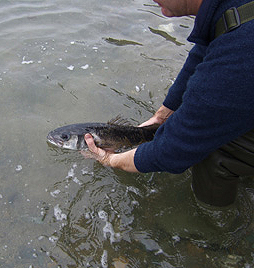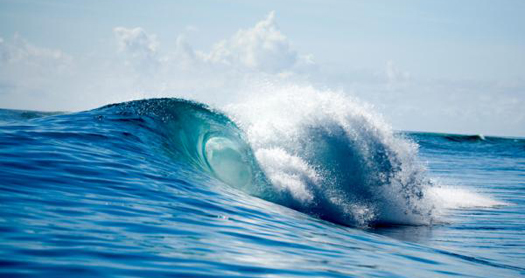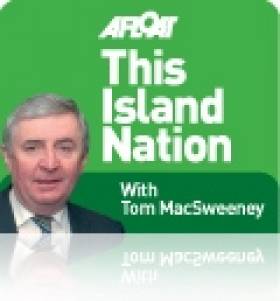Displaying items by tag: Lusitania
Event to Mark Worldwide Release of 'Dark Secrets of the Lusitania'
#LUSITANIA - M3 TV Productions will be holding a special event in the Port of Cork on 14 September to mark the worldwide release of Dark Secrets of the Lusitania.
The TV documentary, which premiered last month on the National Geographic Channel, follows what might have been the last expedition to the wreck of the ill-fated cruise liner.
On 7 May 1915 the passenger liner RMS Lusitania was sunk by a torpedo from a German U-boat off the coast of Cork, with the loss of 1,198 lives. But theories abound that there was more to the disaster than the torpedo strike, and that the ship's cargo hold contained precious art and illegal munitions.
The documentary attempts to uncover what really happened, using the latest submersible technology to see further into the shipwreck than ever before.
Gregg Bemis, the US owner of the shipwreck of the former Cunard cruise liner, will be flying in for the worldwide launch event.
Other guests include representatives from the marine industry, Minister for Arts & Heritage Jimmy Deenihan, Sean Kelly MEP, Senator Deirdre Clune and representatives from the Irish Coast Guard and Naval Service.
Actors will be dressed in First World War period costume to create a special atmosphere on the evening. The Irish Examiner will also display a digital exhibition of photos on the Lusitania, while UCC's Professor Dermot Keogh will give anoverview of that tumultuous period of world history.
Magnificent Asgard, Commercial Fishermen and a Sticky Situation
ASGARD rises again .. Can you help to find goose barnacles? ... Irish brothers wrap up the 18s in Scotland... Commercial fishermen want bass fisheries re-opened.... The weather hasn't really been so bad – do you believe that? The Channel Tunnel buys ferries ... Lusitania artefacts are assigned to the States and the oceans are saving humans ashore. That is the TIN mix this week.... Read on ....
ASGARD IS MAGNIFICENT
I have reported the conservation of Asgard since it began five years ago under the leadership of John Kearon from Arklow who formerly headed up restoration work at Liverpool Maritime Museum where I saw him direct the refurbishment of the Wolfe Tone Bantry Longboat. Both are now on public display at the National Museum in Collins Barracks, Dublin. Asgard looks magnificent, painted on the port side, the varnished hull gleaming on starboard. Standing under the port side at the opening ceremony as she went on public exhibition, I remembered how she had looked when I first saw her, raw, much in need of attention so many years back when John told me with confidence that she would be restored to what she had originally looked like. There was painstaking tracing of artefacts, of locating many items which had been removed from the vessel in previous years. There was a lot of controversy and opposition to the restoration from those who wanted her to go afloat again. They opposed the concept of a vessel being preserved ashore, out of her natural environment. There is no doubt in my mind that the correct decision was taken, to make her a national treasure, on display, open for viewing free-of-charge to the public, a reminder of the birth of our nation and her pivotal role in the 1914 Howth gun-running from which weapons unloaded were later used in the Easter Rising. She will also be remembered as Ireland's first national sail-training vessel. All those memories flowed from the large attendance present when she went on display. I met many friends from the maritime sphere. A common comment was the regret that there is not an Asgard 3 to carry on the great tradition of this name in Irish sail training. The former government and Minister responsible at the time, Willie O'Dea, destroyed Irish sail training, a denial of Ireland's maritime role and of the educational and cultural, formative role of young people through the sea. Is there anyone, any wealthy Irish businessman or business group, who would provide the funding for an Irish sail training vessel. It would have been possible to purchase a new vessel for the €3.8m. compensation paid for the sinking of Asgard 2 but Willie O'Dea handed over that money to the Department of Finance, a blow against Ireland's maritime sphere.
COMMERCIAL FISHERMEN WANT BASS FISHERIES OPENED
 The Irish Fishermen's Organisation has called on Marine Minister Simon Coveney to re-open bass fisheries to commercial fishermen. They have been closed for several years but that may lead to Ireland being excluded forever from fishing bass, while foreign vessels in the EU can catch the fish in Irish waters. The EU has begun a process to put controls on the catching of bass by commercial boats, known as the TAC - Total Allowable Catch. Officials have proposed that this be based on commercial landings of bass over a ten-year period. But Ireland will have no adequate record to claim part of this TAC, so once again the Irish government approach will damage the Irish fishing industry and allow foreign nations to continue catching in Irish waters, while Irish boats cannot. The leisure angling industry demanded and got the ban and has benefited from non-commercial catches. While Irish fishermen are banned from catching bass, foreign boats have targeted the species off the South coast and will be allowed continue, even if a TAC is imposed because they have a catching record. "The Irish Government is again handing national resources to foreign usage," said the commercial fishermen's organisation. Anglers are only allowed to have two bass in their possession in any one 24-hour period and they must be over 40 cm. in total length.
The Irish Fishermen's Organisation has called on Marine Minister Simon Coveney to re-open bass fisheries to commercial fishermen. They have been closed for several years but that may lead to Ireland being excluded forever from fishing bass, while foreign vessels in the EU can catch the fish in Irish waters. The EU has begun a process to put controls on the catching of bass by commercial boats, known as the TAC - Total Allowable Catch. Officials have proposed that this be based on commercial landings of bass over a ten-year period. But Ireland will have no adequate record to claim part of this TAC, so once again the Irish government approach will damage the Irish fishing industry and allow foreign nations to continue catching in Irish waters, while Irish boats cannot. The leisure angling industry demanded and got the ban and has benefited from non-commercial catches. While Irish fishermen are banned from catching bass, foreign boats have targeted the species off the South coast and will be allowed continue, even if a TAC is imposed because they have a catching record. "The Irish Government is again handing national resources to foreign usage," said the commercial fishermen's organisation. Anglers are only allowed to have two bass in their possession in any one 24-hour period and they must be over 40 cm. in total length.
CAN YOU HELP RESOLVE A STICKY SITUATION?
Humans have not managed to create glues that can be used successfully in wet environments, but sea creatures have and Irish marine researchers are trying to find out how they do it. The secrets of the goose barnacle are being sought so that a synthetic version of their natural underwater glue could be used in surgery and dentistry. This barnacle is mostly at sea so examples are difficult to find ashore. Although goose barnacles look like giant shellfish attached to a long neck, they are in fact filter-feeding creatures.They have an ability to attach themselves to practically every surface and researchers have found they can even do so to non-stick frying pans! The glue-like substance they emit, which hardens into a strong "cement", consists of several proteins. Scientists based at the Martin Ryan Marine Institute in Galway hope to study the glands emitting the glue and the protein composition. The team needs a large supply of goose barnacles and has asked for public help from people on the beaches, swimming, surfing and from divers. The barnacles sporadically wash ashore in Summer along the Irish coast. "It might seem perfectly ordinary that a sea creature can stick to a surface, but if you stop to think about it, it's actually quite an incredible innovation by nature," say the researchers. "Humans haven't managed to create glues that can be used successfully in wet environments, but nature has done it over and over again."
TUNNEL BUYS FERRIES – UK GOVERNMENT WANTS TO KNOW WHY

Eurotunnel, the company which operates the Channel Tunnel, has bought three of SeaFrance's former vessels. The move surprised the UK Government where the Office of Fair Trading has launched an investigation to decide whether the purchase is in contravention of merger rules. Eurotunnel Chief Executive Officer Jacques Gounon Jacques Gounon said: "There's an evolution in traffic, notably towards heavy goods vehicles, which can't be fully captured by the Channel Tunnel."
CORK BROTHERS WRAP UP THE 18S IN SCOTLAND
Cork Harbour Monkstown Bay Sailing Club members, brothers Ewen and Colin Barry won nine of the ten trophies up for competition at the National 18 Class Championships in Findhorn in Scotland, a stunning achievement.
Colin is the Club's Rear Commodore and Ewen is Hon.Treasurer. Another MBSC member, Dave O'Connell, a long-time stalwart of the Class was fifth overall in a fleet which included entries from the Scottish host club, from Temasis Yacht Club in London, the Isle of Man YC and the Royal Cork.
Ewen and his crew were sailing 'Good Bad & Ugly' and were top overall boat on nine points, six clear of brother Colin and his crew sailing 'Purple Warriors' on 13 points in second place. They finished on the same number of points as Colin Chapman from the RCYC. A tie-breaker, used in sailing to establish final positions from the best individual race placings, favoured the Monkstown crew. The National 18-foot dinghy has survived several assaults on its popularity, one of which was from the development of the 1720 Class, named after the founding year of the Royal Cork and which it was once thought would replace the 18. That did not happen and, after a surge of popularity, the 1720 declined for a number of years locally though gaining a lot of support internationally. It is now regaining popularity as a sportsboat.
STATE GETS LUSITANIA ITEMS
Items recovered from the last survey of the wreck of the Lusitania have undergone conservation and maintenance in Ireland and been assigned to the State. They include part of the steering mechanism, a bronze telemotor, four portholes, two of them from the first-class passenger area and an indicator used for finding the ship's direction. The items were recovered during the filming of the recently-transmitted National Geographic Channel television documentary. The company sponsored the last survey carried out a year ago.
There have been legal disagreements between American millionaire Greg Bemis who owns the wreck and the State, but there were negotiations involving the National Museum, the National Monuments Service and his representatives after the survey in which Irish maritime archaeologists were involved.
A BAD SUMMER - BUT IT COULD BE WORSE!
It has been a bad summer but history shows that there have been much worse! 1783 for example when there was so much volcanic activity around the world and a fog that lasted most of the summer in England, leading to predictions that it was the end of the world! Between June 23 and July 20 of that year the skies over the UK were covered by a smoky fog and there was regular thunder and lightning which terrified people. There were volcanic eruptions in Italy and Japan and a massive eruption on Skaptar Jokull in Iceland where 9,500 people were reported to have died after being smothered by the immense dust cloud which drifted south and covered much of Europe.
Remember the last Icelandic cloud?
OCEANS ARE SAVING US

If the oceans were not soaking up carbon dioxide from land, global warming would be much worse. A new report this week shows that industrial production and human living requirements on land are now creating so much carbon dioxide in the atmosphere that the oceans and plants ashore are having to absorb more than twice the amount they previously soaked up. They are the only brake on global warming, but having to absorb so much CO2 is changing seawater, a process called ocean acidification. "This change will have profound effects on life in the ocean and those who depend on it," according to the report from the University of Colorado in the USA which confirms data from the Global Carbon Project, linking scientists around the world. Carbon soaked up from the atmosphere by the seas has risen to 5 billion tonnes. Twenty years ago the figure was 2.4 billion.
Email comments, opinions, information to: [email protected] more marine news and comment on Twitter: @TomMacSweeney
And on Facebook – THIS ISLAND NATION page
New TV Documentary on Dark Secrets of the Lusitania
#LUSITANIA - A new TV documentary on the National Geographic Channel follows what might be the last expedition to the wreck of the Lusitania, in a bid to get to the bottom of the century-old mystery surrounding the ill-fated vessel.
On 7 May 1915 the passenger liner RMS Lusitania was sunk by a torpedo from a German U-boat off the coast of Cork, sending 1,198 lives to their doom.
But theories abound that there was more to the disaster than the torpedo strike, and that the ship's cargo hold contained precious art and illegal munitions.
Dark Secrets of the Lusitania attempts to uncover what really happened, using the latest submersible technology to see further into the shipwreck than ever before.
As previously reported on Afloat.ie, Gregg Bemis - the elderly American who owns the wreck of the former Cunard cruise liner - hoped last year to discover once and for all what secrets the ship really holds in what may be the last major dive to the wreck site.
Dark Secrets of the Lusitania premiers on Sunday 15 July at 7pm on the National Geographic Channel, available on Sky and UPC.
The 13 Deadliest Shipwrecks in History
#TITANIC - Irreverent tech website Gizmodo has marked the 100th annversary of the sinking of the Titanic with a list of the 13 deadliest shipwrecks in history.
The list runs the gamut from well over a century ago, in the early days of passenger shipping - see the SS Sultana, a tragedy overshadowed by the assassination of Abraham Lincoln and the end of the American Civl War - to more recent events.
Included are such as sad tales as that of the Empress of Ireland, the worst disaster in Canadian maritime history in which more than 1,000 died, and much closer to home the Lusitania, which went down off Kinsale in May 1915 after a torpedo attack.
But the worst was arguably suffered by the passengers of the steamship SS Kiangya - which blew up 50 miles north of Shanghai in December 1948, taking as many as 3,920 lives - and the horror that befell the MV Doña Paz in the Philippines in December 1987, where estimates put the death toll at an unbelievable 4,000.
Gizmodo has more on the story HERE.
Port of Cork to Mark Maiden Arrival of MV Queen Elizabeth
On Saturday 10th September 2011, MV Queen Elizabeth will make her maiden call to Cobh in the Port of Cork. To coincide with this visit the Port of Cork will formally present a plaque to the Captain of the Queen Elizabeth on the quayside at 10.30am.
This will be followed by a Lusitania Memorial Service led by the Captain and Chairman of the Port of Cork at the memorial in Cobh Town.
Saturday 10th September 2011
0900hrs - MV Queen Elizabeth arrives in Cobh
1045hrs – Plaque exchange with Port of Cork and Cunard
1115hrs – Lusitania Memorial Service Begins in the centre of Cobh Town
1145hrs – Memorial Service Ends
1145hrs – 1245hrs – Band 1 Southern Brigade will play in the promenade in Cobh
Ireland's Top Wreck Diving Sites
With the Lusitania expedition in the news, Saturday's Irish Times presents a guide to some of Ireland's most interesting diving sites for all levels of experience.
Though Ireland can boast an abundance of shipwreck sites, a number of them are off-limits to anyone but the hardiest expert explorers, while others require a licence from the Department of Hertiage.
But open dives are still plenty, such as the wreck of UC-42 off Roches Point in Cork, which happens to lie in a popular diving range, and the Empire Hertiage, which lies 30km off the coast of Malin Head and is regarded as one of Ireland's best wreck dives.
Among the licenced dives, the HMS Vanguard - which was tragically sunk 19km east of Bray by its sister ship Iron Duke in 1875 - is a top contender, with the summer months providing astounding visibility of the ship's 9in guns.
The Irish Times has more on the story HERE.
Lusitania Divers Recover a Number of Items
Divers at the wreck of the Lusitania have recovered important items from the ill-fated cruise liner, The Irish Times reports.
The haul includes a bronze telemotor (part of the ship's steering mechanism), a telegraph that assisted in navigation, and a number of portholes.
It is hoped that some of these might shed some more light on how the ship was lost off the Cork coast, after she was torpedoed by a German U-boat in 1915.
The items are currently being held by Customs and Excise under the 1993 Salvage and Wreck Act until title can be established.
As previously reported on Afloat.ie, Lusitania owner Gregg Bemis is currently mounting what might be the final major dive expedition to the wreck site.
The Irish Times has more on the story HERE.
Divers Recovered from Lusitania Site After Boat Troubles
The Irish Times reports that the Courtmacsherry RNLI lifeboat went to the aid of divers at the wreck of the Lusitania yesterday.
The divers had been operating at the wreck site when their boat developed mechanical issues.
The lifeboat responded immediately in windy conditions and removed the crew to safety, towing the boat to Courtmacsherry.
As previously reported on Afloat.ie, divers led by the wreck's American owner hope to uncover the last big secrets of the stricken cruise liner, which was torpedoed by a German U-boat during the First World War.
What Happened to the Lusitania?
American Gregg Bemis is headed to Ireland for what may be the last major dive to the wreck of the Lusitania.
Bemis, who owns the wreck of the former Cunard cruise liner torpedoed off the Cork coast in 1915, told The Irish Times that hopes to discover once and for all what was in the cargo hold of the ship - and give an answer to rumours that precious art and munitions were part of the manifest.
The millionaire has fought with the Irish State over the rights to the wreck site, to which he has dived twice before, but now he has full licence and access to the latest technology to unveil the Lusitania's deepest secrets.
The Irish Times has more on the story HERE.





































































